| New
Products |
|
| |
|
Operating Strategies |
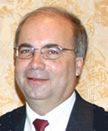 |
| Bob Niemiec |
Does Your Lab Need a Reality Check? Part 2
Recently, I spoke with an investor in a non-optical company. He was concerned this company’s efforts were not recognized and valued appropriately in the marketplace. He complained the company was losing business to cheap, low-cost imports and was concerned that their customers should really be placing more value on the services and products they were providing.
I would suggest that their customers are probably placing the appropriate value on what was being provided. It may be different, however, than how the company perceives the value it provides. Although the company’s perception of its value-added proposition might have been valid at one time, it is probably no longer true. In the end, the customer’s perception is what matters most.
How do your current or potential customers perceive your business? Are you really the low-cost, high-quality provider you thought you were? Even if that was once true, is it still true today? Do your processes reflect state-of-the-art thinking and execution? Is your equipment up to date and maintained to world class standards, or are you simply doing what you’ve always done, because “it’s worked pretty well?” If so, how do you define “pretty well?” Is that what you’ve always done or what your “best–in-class” competition might be doing? What about your staff development and training programs? Will they not only sustain themselves but move your business forward?
The honesty and soul searching involved in answering these questions is never easy, but the alternative is nearly always worse.
—Bob Niemiec is president of Optinova Solutions, LLC a consulting firm specializing in operations improvement, new technology assessment and mergers and acquisitions, primarily in the optical industry. An optical industry veteran, he has held senior level positions in manufacturing and distribution with large optical retailers and manufacturers. He can be reached at
[email protected].
|
| |
|
Tech
Talk |
|
Beveling Unusual Frames and Rx’s
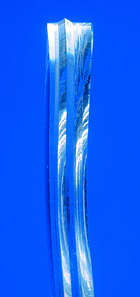
Very small frames, half eyes and frames with odd angles and corners present a beveling challenge depending on the type of edger that is used. Even small chucks are often too large for some of these jobs. To bevel odd shapes, some dispensers rough cut the lens as small as possible on the edger, then complete the bevel by hand on a handstone.
When beveling children’s eyewear, try switching your edger to the passive setting to decenter and block the lenses manually. Otherwise, the block may come in contact with the wheel and shift the lens, causing the bevel to become misaligned.
Special Rx’s often require customized bevels. When creating eyewear for conditions like anisometropia, where there is a difference in power and lens thickness between the right and left eye, customize the bevel placements to compensate for the base and vertex differences. Move the bevel forward on one lens and back on the other.
With a combination of automatic beveling and processing techniques developed by the optical masters, labs today are able to achieve optimum beveling results with a broad spectrum of eyewear. |
| |
|
Marketing Matters |
|
PR Strategies for Labs,
Part 4

This is the fourth in a series of articles that explores how optical labs can improve their public relations techniques.
So you have company or product news that you'd like to see written up in your target market trade publications or journals—the publications that significantly reach your customers or potential customers. How can you reach these editors with your news when they are consistently bombarded by press releases? And how can you deliver the right information to the press to help ensure your news is covered?
Here are five key elements of an effective press release with tips to ensure that your release receives positive coverage.
1. Only issue press releases that are newsworthy. What is a newsworthy press release? In general, a newsworthy press release addresses issues that your prospects or customers are grappling with and demonstrates why they, as well as the press, should care about the press release as well as your company. Here are some examples: a new service offered by your company that has unique positioning against competitors; a new product; a special pricing deal; a product or service bundle; an announcement with another vendor such as a strategic alliance or joint development; results of a survey which positively impacts your business; several key customer wins; winning some sort of contest; and so on.
2. Define Target Press List. Your target press list consists of the names, addresses, phone, fax, and email addressed of the key press you’d like to cover your company and technology. These can include both the trade press (such as Lab Advisor, Vision Monday or 20/20) and your local press (newspapers, radio stations, TV). Yes, you can promote interesting things you’re doing to them as well, and generate press for you and your customers.
When developing your target press list, make sure you determine who at the publication covers your product or service area. Do not use a blanket distribution strategy to disseminate your press release to publications. It drives reporters and editors crazy.
3. Capture the reader’s attention with the headline. In order to capture the reporter’s attention, the headline should appear in capital letters, boldfaced, succinct, with an action verb that mentions a benefit, if possible.
Let’s say you’re issuing a press release on a new version of a product. The headline should be something like:
ABC Optical Installs A-R
or
ABC Optical Moves HQ
The text underneath the headline is called the subtitle, or dek, in newspaper speak. Here’s an example:
ABC Optical Moves HQ
Opens new 25,000-square-foot facility with state-of-the-art equipment
The dek is just that—additional title information that explains the news value of your press release. It’s not necessary to include a dek.
4. Include your product’s positioning, key features, and benefits to end users. Positioning, key features, and benefits are key elements that press will want to include in an article. Positioning is something that can be conveyed succinctly in a company representative quote or in the first or second paragraph of the release. Key features and benefits are deserving of their own subhead (capital letters and lower case) in the press release.
ABC’s new XL AR is a new hard-coating/AR combo offered at an affordable price. The lab still distributes premium AR coatings from Zeiss.
5. Include a customer quote if possible. Including a customer in your release helps raise its level of newsworthiness as well as increasing the release’s chances of being covered by the press. It’s also helpful to offer these references to key press contacts to encourage them to write an interesting article. You will need to obtain permission from the customer to take press calls, and you will want to coach them on what to say before the press release is issued. It’s also wise to call customers to let them know a member of the press will be contacting them.
Look for more tips next month. |
|
 |
|
Considering the Cost of In-House AR, Part 1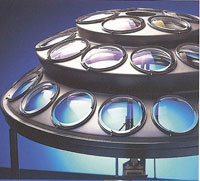
In 2006, the penetration of anti-reflective (AR) lenses in the U.S. was only 22 percent. Compared to nearly 100 percent penetration in Japan and about 50 percent in Western Europe, there is still a huge opportunity to grow your business through AR lenses whether you are a lab or an ECP. Some retailers push AR so hard they have a huge concentration of AR lenses in job totals.
Through a review of several independent laboratory companies across the U.S. and elsewhere, we discovered that one of the most profitable areas of business to the wholesale lab market is AR lenses. The ability to sell, process, and service these lenses can add a tremendous amount of value to the lab business. In some cases the addition of processing AR lenses can increase the gross profit of the lab by 10 percent of net sales.
As a lab owner, there are several options for providing your ECP base with AR lenses. Many start out by outsourcing their coatings to large coating centers, selling stock AR-coated lenses, and/or outsourcing the work down the street (or across the country) to a competitor. Sometimes the types of coatings offered require that the surfacing be performed by the lab that does the coating and the lenses provided must come from that lab. Other times, your lab can surface the lens and send it out to be coated and returned to you for completion.
Many independent labs are turning to installing their own in-house AR coating facilities in order to reduce their turn around time and keep their surface departments from being idle on outsourced AR coated jobs. There are many areas a lab must consider before making the investment in in-house AR coating:
- What coatings is my lab selling now?
- What will it cost?
- Will it be profitable?
- Can I provide better service to my customers? Will it help them improve their businesses?
- What restrictions does my lab have with suppliers regarding marketing of an in-house coating product vs. the supplier’s product? (i.e. our coating X is as good as, or better than coating Y, or we can turn our in-house coating around faster)
- Would it be more advantageous to license a coating through a supplier than sell an in-house lab specific brand?
The next series of articles will provide a case study of a lab’s decision making process for installing an in-house AR coating facility, the facilities costs, and the result of the change in business after one year of having the processing facility. We will include methods the lab uses to market its coatings, turn time vs. outsourcing of AR, and a profit analysis showing the lab’s growth in profitability in the first year vs. the year before.
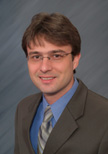 —Jason A. Meyer is senior vice president, HPC Puckett & Company. Based in San Diego, Calif., HPC Puckett & Company specializes in mergers and acquisitions of wholesale optical laboratories. You can send comments or questions about this article or any other Dollars & Sense articles to Jason Meyer at
[email protected]. —Jason A. Meyer is senior vice president, HPC Puckett & Company. Based in San Diego, Calif., HPC Puckett & Company specializes in mergers and acquisitions of wholesale optical laboratories. You can send comments or questions about this article or any other Dollars & Sense articles to Jason Meyer at
[email protected].
|
 |
| |
|
 |
|
Meeting a High-Minus Challenge
Recently,
Precision Optical Group received six orders for -24.00D sph in single-vision standard plastic. All the orders were for larger zyl frames and the customer requested the bevel to the front of the lenses.
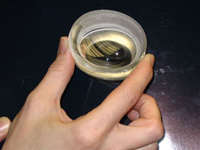 |
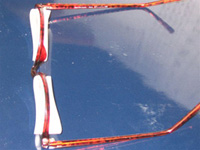 |
|
A close-up view of a -24.00D sphere in single vision standard plastic.
|
A combination of hand and machine edging was used to fit the lenses into the frames. |
|
Photo courtesy of Precision Optical Group. |
The first challenge was to educate the customer on the limitations on the prescription. Next, we got down to manufacturing the lenses. We used a -12.00D base bi-concave lens blank that we cribbed down to the smallest diameter that would cut out.
One of the biggest challenges was that the edge thickness was greater than the edger blade width. We had to hand edge the lenses down to match the frame shape before starting the edging process.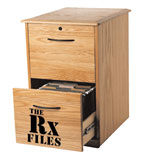
We then machine edged the lenses down, slowly stopping at 2mm over the desired size. Finally, we hand-edged the lenses to size. All together we put in almost eight hours of work into our six pairs of
-24.00D jobs. —Shannon Waigand, Director of Sales & Marketing, Precision Optical Group, Creston, Iowa |
 |
| |
 |
|
Tina Bussey of Luzerne Optical
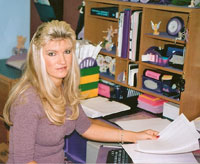 As an industry veteran with over 18 years of experience, Tina Bussey began her career right out of high school at New City Optical, a wholesale lab in Baltimore. As an industry veteran with over 18 years of experience, Tina Bussey began her career right out of high school at New City Optical, a wholesale lab in Baltimore.
“I originally intended for the job to be temporary,” said Bussey, “but I enjoyed it so much, I decided to make it my career.” Bussey started at the bottom and eventually worked her way up to becoming the office manager and inside sales consultant for the laboratory.
In August of 2007, Bussey joined
Luzerne Optical, a family owned and operated wholesale laboratory in Wilkes-Barre, Pa. As sales manager, Bussey now calls on existing and prospective accounts in Maryland, Northern Virginia and Washington D.C. Her primary responsibilities include new product training for doctors and their staff, handling issues or concerns and overall promotion of the laboratory.
Bussey said developing strong relationships with her customers is one of the things she loves most about her job. “After a while, I develop a bond with them that is almost impossible to break. This is important as there are many competitors out in the field who challenge that bond every day,” Bussey commented. She said her daily reward comes from the confidence her customers place in her and the laboratory.
Bussey noted that the highlight of her career has been getting to meet some customers face to face after speaking with them on the phone for so many years at her previous job. “It’s also fun for my customers to finally put a face with my name,” she said. Her job also enables her the flexibility of weekends off to pursue her hobbies of graphic design and disc jockey entertainment. “I have also used my graphic design skills to help some of my customers with their marketing materials.”
Looking ahead, Bussey said she sees her job with Luzerne Optical as a long-term commitment.
“I’ve learned about so many aspects of the optical industry, it makes me love my position even more. I’m much happier as a sales manager than any other position I have held because it is more personable.” Even though she wants to hold the same position, she plans to build up her territory and keep her education up-to-date on new products in the industry. “By keeping up on my own education, I can continue to educate my customers and maintain the loyal relationships I have built.”—Samantha Toth |
 |
| |
 |
|
Protecting the Ocular Lens from HEV Light
Jim Gallas, a photo-physicist and physics professor at the University of Texas in San Antonio, researches the harmful effects of sunlight on the human eye. He is particularly interested in how exposure to ultraviolet and high-energy visible light can cause irreparable damage such as macular degeneration and cataracts.
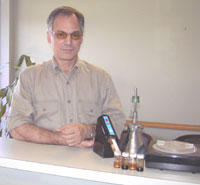 |
| Jim Gallas |
Gallas’s company,
Photoprotective Technologies, has developed a synthetic form of melanin, a substance found in human skin. When used in sunglasses, it protects the eyes from the sun's harmful blue light rays, known as High Energy Visible light, without affecting wearers' color recognition. Photoprotective Technologies licenses the technology to Intercast, Essilor, Specialty Lens and Bocu Vision to produce and market melanin lenses. These manufacturers supply the lenses to sunglass makers and laboratories.
Recently, Gallas has been studying Ocular Lens Pigment, a yellow-brown tint that occurs naturally in the ocular lens as it ages.
“OLP's ability to eliminate UV and reduce HEV is recognized by leading scientists for its role in protecting the retina from age-related Macular Degeneration,” said Gallas. “It can truly be regarded ‘as the body's own sunglass lens filter.' ”
Gallas has developed and patented a synthetic form of ocular lens pigment (OLP). Synthetic OLP can be used in the production of both spectacle lenses and intraocular lenses, according to Gallas. He noted that post-cataract patients are particularly at risk of damage from HEV light, because cataract surgery removes the crystalline lens containing the OLP and substitutes a clear, artificial lens, exposing patients to potentially damaging violet and blue light. “Children may also be at risk of HEV damage because they haven’t yet developed a sufficient amount of OLP in their ocular lenses,” Gallas said.
Gallas is currently seeking partnerships with IOL and spectacle lens suppliers that can incorporate synthetic OLP into their products. |
| |
 |
|
VSP Lab to Produce Crizal Coatings—VSP Vision Care has signed an agreement with Essilor of America to produce Crizal coatings at VSP’s facilities in Rancho Cordoba, Calif. Although VSP has long been a distributor of Varilux and other Essilor lens products, the move represents a new level of cooperation between two of the industry’s leading companies.
The coating center, adjacent to the VSP optical lab, will have the onsite capability to apply Essilor’s Crizal lens products: Crizal, Crizal Alizé, Crizal Alizé with Clear Guard, and the newly-launched Crizal Avancé with Scotchgard Protector. It will be one of a select number of U.S. optical labs producing Crizal lenses in-house.
“The addition of Crizal’s leading-edge technology to the VSP Sacramento Lab is a further expansion of VSP’s commitment to deliver high quality products and an outstanding service experience to our customers,” said Bill Conner, president of the VSP Laboratory Division.
“VSP is focused on strengthening the eyecare delivery system by expanding our relationships with organizations that work with private practice doctors," Conner said. "This announcement is one part of our ongoing effort to lead the way in providing high-quality products and services to doctors that reduce cost, speed delivery, and increase choice.”
Bob Colucci, president of Essilor’s Independent Distribution Division, said, “We are thrilled to have the VSP Sacramento Lab join the Crizal supply network. VSP has established a reputation for superior customer service, and introducing in-house Crizal production will improve VSP’s service delivery times for doctors and their patients nationwide.”
VSP operates three wholly-owned optical labs located near Sacramento, Columbus, Ohio; and Dallas, Texas.
Essilor Honors Top Varilux and Crizal Labs—At the national sales meeting in New York City last month, Essilor of America honored the wholesale labs in its Independent Distribution Division that had outstanding sales of Essilor products in 2007.
Essilor named Davis Vision of Plainview, N.Y. the Varilux Lab of the Year.
Michael O’Connor, Davis Vision senior vice president of manufacturing, along with Shirley Wanamaker, optical buyer, and Jobany Garces, assistant vice president of manufacturing, accepted the two awards on behalf of Davis Vision.
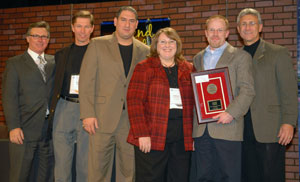 |
| Bob Colucci, Essilor of America’s president, Independent Distribution Division (far right), along with Varilux representatives Steve Mills (far left) and Jim Blasco (second from left), present an award to Davis Vision employees Jobany Garces, Shirley Wanamaker and Michael O'Connor at Essilor’s January sales meeting. |
“Last year, we utilized close to half a million Varilux lenses and over a quarter million lenses with Crizal or Alizé anti-reflective coatings,” said O’Connor. “That equates to nearly 40,000 Varilux and upwards of 25,000 Crizal/Alizé lenses, on average, each month.”
Essilor honored Davis Vision with the Crizal award in 2006, as well.
Four other labs—Italee Optical of Los Angeles, Harbor Optical of Traverse City, Mich., Enterprise Optical of Madison Heights, Mich., and Optical Prescription Lab of Pelham, Ala.—were honored for their outstanding performance in Varilux.
Continental Sales Corp. of Watsonville, Calif. was named Crizal Lab of the Year. In addition, Davis Vision of Plainview, N.Y., Pech Optical of Sioux City, Iowa; Optical Prescription Lab of Pelham, Ala. and RD Cherry Optical of Melvindale, Mich. were recognized for their outstanding performance in Crizal.
Hirsch Optical to Distribute Marco Polarized Sunwear—Marco Polarized Eyewear, a division of the European company, Merchamp Ltd., has announced that Hirsch Optical Corp., based in Farmingdale, N.Y., will distribute its line of fashion-conscious, Rx-able, polarized sunglasses in the U.S.
“This is an exciting opportunity and we are looking forward to building our relationship with Hirsch Optical,” said Cornelius Daly, marketing manager for Marco Polarized, based Springfield, Mass. “From the beginning, the team at Hirsch really understood what our marketing model was all about.”
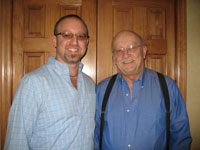 |
| Michael Rothstein, vice president of Hirsch Optical, left, with Hal Rothstein, president of Hirsch Optical. |
The Marco Polarized collection is meant to targets consumers looking for an affordable prescription-ready frame with style and quality. The 21-piece collection, which is already being distributed in Europe, will be presented to a select group of U.S. optical laboratories to offer an opportunity for labs to generate additional new sales and create a continuous revenue stream.
“This is a unique collection, and a comprehensive marketing program,” said Michael Rothstein, vice president of Hirsch Optical. “The product quality and style selection is ideally suited to our market.”
Founded in 1978, Hirsch Optical serves the New Jersey, New York Metro, Long Island and Connecticut markets and has been ranked among Vision Monday's Top Independent Laboratories for over 10 years.
Jarosz to Represent Pinnacle in Southeast—Pinnacle Optical in Birmingham, Ala. is expanding its sales area throughout the Southeast and has hired Patrick Jarosz as a new field representative covering Tennessee, Georgia, Florida and the Carolinas. Jarosz is a former Varilux detail rep and also represented VSP Labs Columbus and Ophthonix. |
|
 |
|

|
K9 Recirculating Chiller
Manufacturer/Distributor: Applied Thermal Ltd.
Description: Recirculating chiller
Features/Functions: 9kW cooling capacity. Provides reliable precision temperature control for multi-spindles, coolants and polishing compounds.
Applied Thermal Control has dramatically reduced the size of the unit, thereby releasing valuable laboratory space. Temperature stability of 0.10C. Two-year guarantee; worldwide support.
Size: 77cm x 51cm
+44 (0) 1530 839998 (UK)
www.app-therm.com |
| |
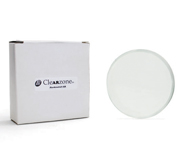 |
CleARZone
Product Name: CleARzone
Manufacturer/Distributor: Landon Lens Manufacturing Corp.
Description: Proprietary semi-finished, plastic anti-reflective lens
Features: 1.499 index of refraction. 70mm diameter. Front side AR coating; tintable back side. Guaranteed for 18-months.
Availability: Single-vision (2, 4, 6 and 8 base); flat-top bifocal and Channel 14 short-corridor progressive designs (4, 6 base, +1.00 to +3.00 adds)
(800) 793-6687
www.landonlens.com |
| |
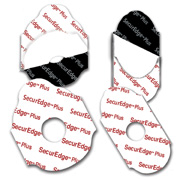 |
OptiSource IFP (Intermediary Film Pads)
Manufacturer/Distributor: OptiSource International
Description: Edging pads designed for hydrophobic/oleophobic AR lenses
Features/Functions: Clear film pads contain proprietary adhesive that sticks to hydrophobic/oleophobic AR lenses. Top side of the pad substrate is designed to accept blocking pads and form a strong bond between the two surfaces, creating optimal adhesion to hydrophobic surfaces and blocking pads.
Size: Large IFP 28 x 40mm. Small IFP 18 x 40mm. Both sizes feature easy-release yellow pull-off tab.
(800) OptiSource (678.4768)
www.1-800-OptiSource.com |
| |
|



|
Transitions VI
Manufacturer: Transitions Optical
Description: Sixth-generation high-performance plastic photochromic lens
Features: Transitions VI lenses are darker outdoors than Transitions V lenses and Transitions Next Generation lenses in any temperature, reducing discomforting and disabling glare; are clearer indoors than Transitions V lenses; and are faster to fade back than Transitions Next Generation lenses, according to Transitions. Transitions VI lenses also block 100 percent of UVA and UVB radiation—and now provide UV 400 protection. Additionally, Transitions VI lenses are compatible with anti-reflective (AR) coatings from all major manufacturers. Combining Transitions VI lenses with an AR coating, improves the indoor clarity of the lens, reduces distracting glare and enhances nighttime driving.
Availability: All major lens materials and designs.
(800) 533-2081
www.transitions.com |
| |
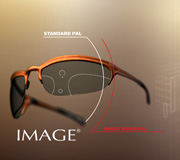
|
Manufacturer/Distributor: Younger Optics
Description: Decentered, polarized progressive designed for steeply wrapped frames
Features: Decentered 7mm to allow for maximum cut-out opportunity. 83mm effective blank size. No secondary calculations necessary for use. Recommended for narrow PDs. No need to compromise technology and performance on Rx sunglasses due to cut-out issues. Exceptionally wide distance zone is optimal for sunwear.
Availability: +8 base curve; NuPolar Poly Gray
(800) 366-5367
www.youngeroptics.com |
| |
|
|
|
| In This Edition...
|
| |
|
•
Subscribe
to Lab Advisor
The monthly update for Optical Laboratory Owners and Managers
•
Forward this issue of Lab Advisor to a friend or colleague
•
Print this issue of Lab Advisor
•
Stay on top of optical industry news!
Subscribe to our other
e-newsletters:
•
VMail Extra
•
Business Essentials
If you have lab news or want to share information about technical topics,
please
contact us.
Or
contact
Andrew Karp,
Editor-in-Chief
Visit
LabTalkonline.com for additional articles of interest about labs. |
| |
| |
 |
| |
| LabTalk Spotlight February 2008
In LabTalk’s January/February issue, you’ll find a new column called, Focus on Protection written by Jon Torrey, a member of the Vision Protection Committee, a new Vision Council committee dedicated to expanding the protective eyewear market on behalf of all segments of the industry, from sports and industrial safety eyewear to computer vision lenses to home eye and sun protection. This column will appear three times a year in LabTalk with each column exploring a different facet of eye protection.
In this first column, Torrey explains the benefits for labs in encouraging their customers to prescribe Near Variable Focus Lenses. Check out this excerpt:
“It’s 2008, and technology continues to march on. The biggest product release last year was Apple’s iPhone–the next step in indispensable electronic devices. Between cell phones, DVD players, GPS devices, handheld games, computer CRTs or LCDs and good old-fashioned printed material, most of us spend a lot of time looking at intermediate and near images. In fact, for most people, viewing things at a distance of one to three feet now takes up more than half their waking hours. Given that the human vision system is really designed for looking far away, today’s world confronts us with a very demanding visual experience.
For the optical industry, this change in how we view the world presents a real opportunity. Optometrists and ophthalmologists need to expand their clinical process, and test every patient at intermediate distances. Patients should leave the exam room with at least two prescriptions–one for general wear, another for intermediate and near use.”
Find out ways to help ECPs discuss these lenses with their patients and turn this niche market into a lucrative business for your lab.
To read the entire article, “Near Variable Focus Lenses, the best kept secret in the optical industry” log onto
http://www.labtalkonline.com/ Here you will find the article listed under the Features section.
|
|
Buying Group & Lab Association News
NovaMed Purchase The Buying Group—NovaMed, based in Chicago, has acquired The Buying Group, a Minneapolis-based optical products purchasing organization, on Dec. 31 for approximately $7 million.
“With over $24 million in gross sales and approximately $2.4 million in net revenue, The Buying Group represented an attractive acquisition opportunity for us,” said Thomas Hall, NovaMed’s chairman, president and chief executive officer.
Added Hall, “This acquisition solidifies NovaMed’s position as one of the leading optical products purchasing organizations in the nation. We look forward to the continuing growth of our optical products business.” NovaMed also has majority ownership interests in 34 surgery centers in 17 states, and owns and operates two wholesale optical labs.
The Buying Group consists of two divisions. Optical Synergies, the wholesale lab division, consists of 76 members. Premier Vision, the retail division, consists of 53 members.
The Buying Group’s management team, headed by Bruce Brady, remains in place.
OLA Presses FDA to Change Proposed Impact Testing Guidelines—Responding to a call by
the Food and Drug Administration (FDA) for comments on its Draft Q&A Guidance on Lens Impact Testing, the Optical Laboratories Association (OLA) has stepped forward with a series of recommended changes that reflect the concerns of optical laboratory operators.
“OLA members have a major portion of the responsibility for compliance with impact testing requirements, and are very heavily invested in impact testing of spectacle lenses. We are very glad to have the opportunity to participate in the dialogue with the FDA about changes in the implementation of the impact testing regulations,” said Bob Dziuban, OLA executive director. “Our comments focused on two specific areas where we believe the FDA should review and change the guidance published in the Draft Q&A document. OLA joins with all the organizations in the optical industry in requesting that the FDA give careful consideration to the need for the changes in the Draft Q&A Guidance, and the economic impact those changes will have on consumers.”
FDA officials said they will continue to accept comments on the Draft Q&A beyond the original 90-day deadline, which expired on Jan. 24.
View a PDF of Optical Laboratories Association's Comments Regarding FDA's Impact-Resistant Lenses Questions and Answers Guidance. |
|
